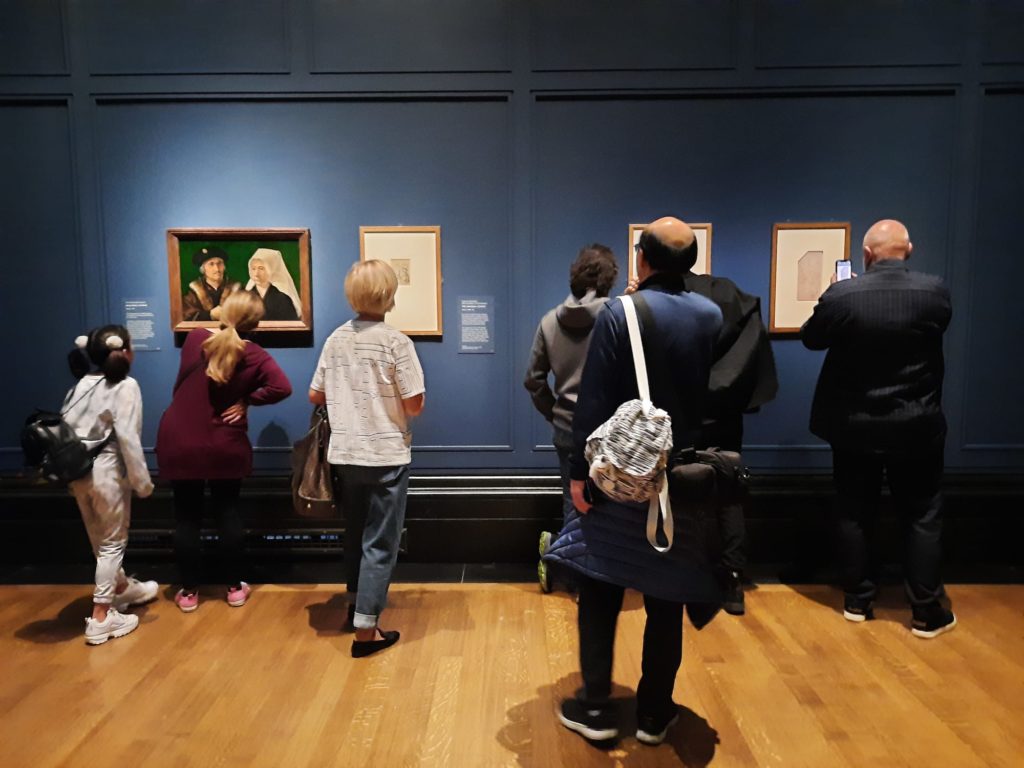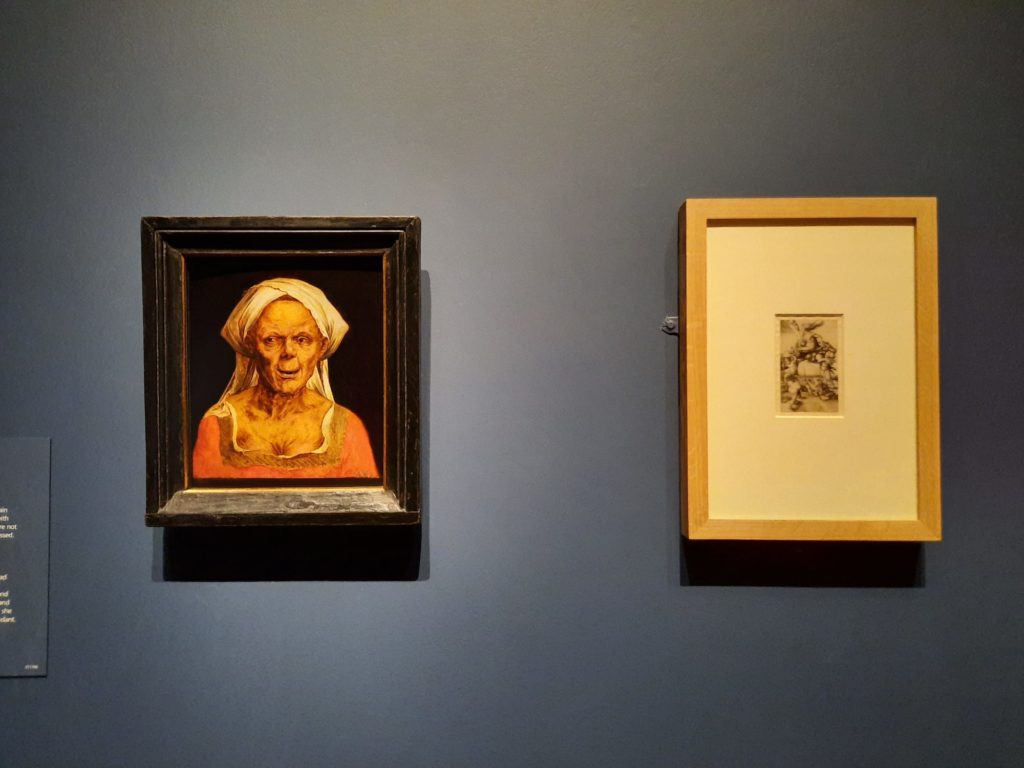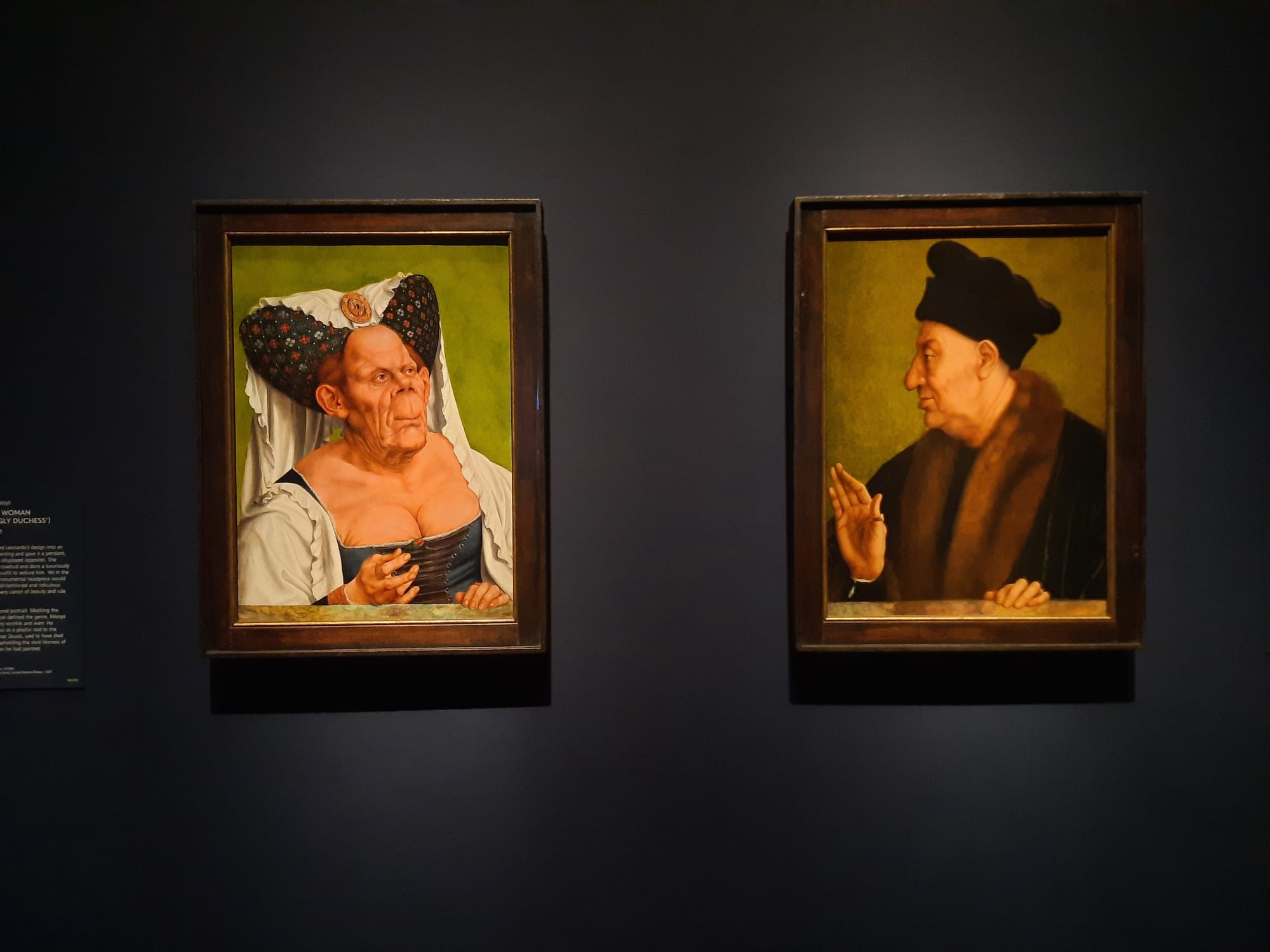The Ugly Duchess: Beauty And Satire In The Renaissance – National Gallery, London
A small exhibition at the National Gallery on beauty and satire, The Ugly Duchess raised more questions for me than it answered, but did at least get me thinking.


The Ugly Duchess: Beauty And Satire In The Renaissance
I do love a one room exhibition at the National Gallery, but haven’t been for a while. These deep dives into a restricted number of artworks suit both my attention span and my love of overthinking. They give an opportunity to consider artworks from different perspectives, to leave no stone unturned in the search for new information.
The Ugly Duchess: Beauty and Satire in the Renaissance is a little unusual, in that I left it no wiser about the painting under discussion than when I entered. The ‘Ugly Duchess’ in question is a 1513 work by Quentin Massys. It shows a woman with exaggerated features and provocative dress, seemingly holding a flower out to a suitor. This exhibition reunites the Duchess with its apparent pendant, a portrait of a man now in an American private collection. Given the extreme nature of her appearance, however, his is a bit of a disappointment. Just a slightly plain looking older guy.
Alongside this pair are a couple of other paintings (another version of the male portrait and other portraits of elderly or ‘grotesque’ subjects), a wooden sculpture and a ceramic work, again of older women. Plus some drawings. The drawings are key to understanding the Ugly Duchess, as they reveal that the design is not Massys’s, but by Leonardo da Vinci. His original drawing does not survive, only copies by students and followers. Other ‘grotesques’ by da Vinci are also on display.


But What Does It Tell Us?
What, indeed? After visiting the exhibition and doing some supplementary investigation, I’m still not sure. The contenders are:
- Is this a painting of an ugly woman we’re meant to laugh at?
- Is it satire on beauty standards and love, a wealthy older woman as lascivious as the older men who pursue younger lovers?
- Is it an anatomical exercise by da Vinci, imagining the end result that different exaggerations of facial structures would give?
- Are we invited, not to laugh at this woman but to find her powerful? Friendly and kind? Something else?
I don’t know. And I haven’t even got into the additional layers of meaning added by John Tenniel basing his Alice in Wonderland Duchess on the painting (which is where she got her nickname).
I think there’s a bit of a risk here of rewriting history. People in the Renaissance didn’t think very positively about facial and physical differences: we know this even from da Vinci’s own notes. It’s hard to know exactly how a Renaissance viewer would have perceived the work and its intent. But the supplementary works on display demonstrate a trend towards portraying older women outside of conventional beauty standards as humorous. Whether that humour was derogatory or satirical is hard to say, and surely not consistent. One video I watched made what I think is a very important parallel to Madonna. If we think about recent scrutiny of her appearance and romantic pursuits, are we that far removed from Massys’s original audience?
What I do know is a lot more about the painting itself. Another excellent video is this one featuring the conservator who worked on the Ugly Duchess before the exhibition, Britta New. It’s a wealth of information about Massys’s techniques, the painting’s construction, its history, and its pairing with the plain man described above. In addition to all this, listening to New talk about the painting’s beauty did more to shift my opinion on the work than anything in the exhibition itself.
Salterton Arts Review’s rating: 3.5/5
The Ugly Duchess: Beauty and Satire in the Renaissance on until 11 June 2023
Trending
If you see this after your page is loaded completely, leafletJS files are missing.


I agree with Lindsey – I see cruetly rather than amusement. A little insensitive in the current climate.
I tend to agree, I don’t think the point around trying to reframe it as empowering satire quite came off…